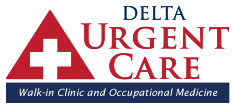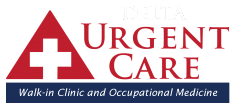At one time or another, most of us have experienced the excruciating pain as we twist our body or a joint as a result of a fall or improper landing. Ankles are the most commonly sprained, but these tips can help you recover more quickly.
What’s the difference between a sprain and a strain?
It helps to know the difference. A strain is a muscle injury while a sprain is a ligament injury. Your ligaments are the rugged, non-stretchy tissue that connect joints as well as giving your joints support. So a sprain is an injury to a ligament. If it’s only slightly stretched but can still support the joint, you’ve luckily only experienced a mild sprain. If the whole support of the joint is disrupted, this is a more severe sprain.
How do you know you’ve experienced a strain or sprain?
Symptoms for strain and sprain include:
- pain in the injured area
- swelling in the injured area
- difficulty using or moving the injured area in a normal manner
- bruising or redness in the injured area
What do you do if you suffer a sprain or strain?
It’s key to prevent further injury. Contrary to your mother’s advice, heat like warm compresses can actually do more harm than good in the first few days after a sprain or strain. Resist massaging the area too vigorously as well as this could increase bleeding around the torn ligament or muscle.
A visit to the urgent care is a quick and convenient way to be sure if you have a strain or a sprain. Even if you decide not to visit us, you have to give your muscles or ligaments the best possible chance of recovery.
Steps To Recovery
First, protect your muscle or joint. At our urgent care, we can provide splints, braces or even slings for your shoulder, arms, ankles, knees or more.
Many medical practitioners will recommend RICE to help reduce swelling and pain associated with strains or sprains:
- Rest the injured area. This may mean using crutches or a cane if the ankle or knee is hurt. Don’t forget to move those injured from time to time. Do this very gently in all directions, but avoid any movement that causes a lot of pain. Avoid putting your full weight on the injury and vigorous exercise for several weeks. Our staff can show you the exercises best for recovery.
- Ice the injured area for 20 minutes up to eight times a day. Don’t let it touch your skin directly as it can damage the skin. Place the ice in a plastic bag, then wrap it a towel. You can also use a bag of frozen peas! Icing reduces both pain and inflammation because it limits the blood flow to the damaged area.
- Compress the injury with bandages. Consult with your doctor or our urgent care physicians about the best compression method and how tight it should be, to allow free movement and prevent stiffening.
- Elevate the injured area above the level of the heart as much as possible. The blood actually needs to flow away from the affected joint to help reduce pain and swelling.
Consult with your doctor or our urgent care staff about over-the-counter pain relievers such as ibuprofen.




